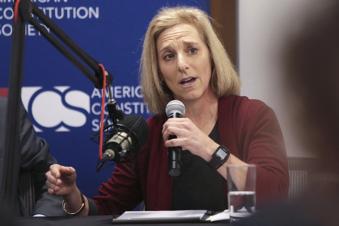Listeners:
Top listeners:
00:00
00:00
volume_up
chevron_left
-
 play_arrow
play_arrow
Sunny 97-7
-
 play_arrow
play_arrow
95 & 96-1 The Rock
-
 play_arrow
play_arrow
The Great 98
-
 play_arrow
play_arrow
The Source
8-1-24 governor evers, dcf report steep decline in child care affordability

share
close
MADISON — Gov. Tony Evers, together with the Wisconsin Department of Children and Families (DCF), today announced the results of the 2024 Market Rate Survey, which found a larger-than-predicted increase in child care provider prices between 2022 and 2023, resulting in a drop in affordable child care slots by nearly 25 percent. The Market Rate Survey is a federally required collection and analysis that helps the state determine what prices child care providers are charging and the buying power of its Wisconsin Shares subsidy program. According to the 2024 report, Wisconsin families with an infant in center-based care are seeing an average 11 percent increase in monthly tuition prices, while Wisconsin families with an infant in family-based care are seeing an average 14 percent increase. These prices also outpaced Wisconsin’s overall 4.9 percent inflation rate between the two years. “The price of child care in this state is too darn high, and working families and child care providers across our state have been sounding the alarm on this issue for years. But Republican lawmakers have consistently refused to provide meaningful investments to support the child care industry, including through the Child Care Counts Program, often leaving these providers with no choice but to raise their prices or, in many cases, close their doors for good,” said Gov. Evers. “The Legislature must get serious about reducing out-of-pocket costs for working families to afford child care. Working families in our state can’t afford to lose any more affordable child care slots, and our economy and workforce can’t afford to lose more workers because they can’t find or access the child care they need,” Gov. Evers continued. “We need long-term, meaningful investments in our child care industry—including direct support for Child Care Counts—and I won’t stop pushing for those investments as long as I’m governor.” For families participating in Wisconsin Shares, the state’s child care subsidy program, the rise in prices has led to a steep decline in child care affordability, with only 50 percent of slots considered affordable compared to 74 percent in 2022. A slot is considered affordable when the maximum subsidy rate is at or above the price of the slot type. The last subsidy rate increase occurred in January 2022, which put the state the closest it has been to the 75 percent benchmark outlined in state statute and recommended by the federal government. The rise in child care tuition prices comes as payments from the Child Care Counts Program were cut in half in May 2023 due to an end of federal funding and a lack of additional state investment by Republicans in the Wisconsin State Legislature, despite the governor’s efforts to secure long-term, meaningful state funding. Without additional state investment, the program is expected to end June 30, 2025. “Child care providers have been very clear that without a long-term state investment, they will need to raise their prices,” said DCF Secretary Emilie Amundson. “Without a program like Child Care Counts, we can expect to see these numbers continue to increase and more families priced out of care, which will ultimately hurt our state’s workforce and economy.” Child Care Counts launched in 2020 using federal relief dollars and has delivered over $750 million in support to child care providers to increase staff compensation, keep the price of care stable, expand access to care, and more. To date, Child Care Counts has helped more than 5,314 child care providers keep their doors open, ensuring the employment of 64,533 child care professionals and allowing providers to continue care for more than 364,280 kids.
Written by: Radio Plus
Rate it






Post comments (0)